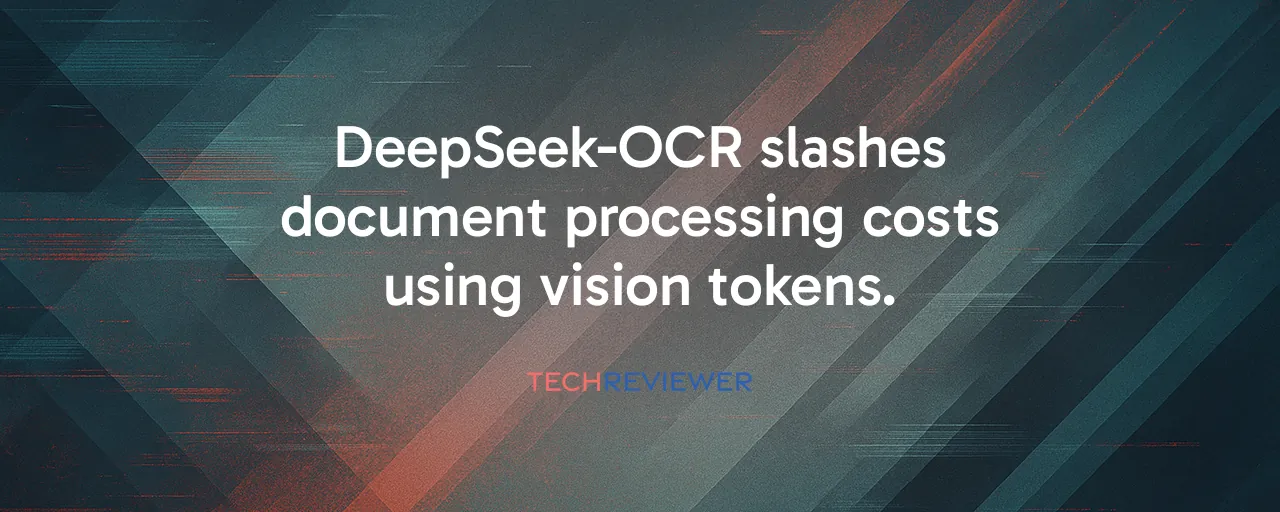A New Way to Handle Documents in AI
Processing mountains of documents has always been a headache for AI systems. Traditional methods chew through thousands of text tokens to parse a single page, driving up costs and slowing things down. Enter DeepSeek-OCR, a 3-billion-parameter vision-language model from DeepSeek, released on October 20, 2025. It flips the script by treating text as images, compressing them into vision tokens that pack way more information than their text-based cousins. The result? In its Tiny mode, a single page of a simple presentation requires just 64 vision tokens, while complex documents in Gundam mode can use up to 800, compared to thousands for older systems like MinerU 2.0. This efficiency could change how we handle everything from legal contracts to historical archives.
What makes this approach stand out is its ability to cut through the noise of traditional tokenization. By turning text into visual data, DeepSeek-OCR captures patterns and relationships that are lost when you process one word at a time. It's a bit like reading a map instead of a list of directions; you see the big picture faster. The model's open-source release under an MIT license has already sparked excitement, racking up over 7,100 GitHub stars in days and earning praise from AI heavyweights like Andrej Karpathy, who described it as a significant development that could signal the end of traditional tokenizers.
Why Vision Tokens Work So Well
At the heart of DeepSeek-OCR is its DeepEncoder, a 380-million-parameter vision engine that blends tech from the Segment Anything Model and CLIP with a 16x convolutional compressor. Each vision token represents a 16x16 pixel patch of a document image, packing in details like multiple characters or small words in one go. This setup allows the model to achieve near-lossless 97% decoding precision at a 10x compression ratio, meaning it can represent a page with a fraction of the tokens needed by text-based systems. Even at 20x compression, it holds onto 60% accuracy, making it practical for less critical tasks.
The secret lies in how vision tokens handle information density. Text tokens break things down into word fragments or characters, which can be repetitive and inefficient. Vision tokens, on the other hand, grab chunks of visual data, capturing spatial relationships like font styles or layouts that text tokenization ignores. It's a more holistic approach, closer to how humans skim a page. On benchmarks like OmniDocBench, DeepSeek-OCR outperforms models like GOT-OCR 2.0, using 61% fewer tokens while maintaining or beating their accuracy. This efficiency isn't just academic; it translates to real-world speed, with a single NVIDIA A100 GPU processing over 200,000 pages a day.
Real-World Wins: From Archives to Legal Files
DeepSeek-OCR's impact is already being felt in practical settings. Take academic researchers digitizing historical manuscripts. One project tackled 50,000 pages of medieval texts using a single GPU, a task that would've cost a fortune with commercial OCR tools. The model's ability to handle complex layouts and even non-text elements like diagrams makes it a standout. In the legal world, companies are using it to compress entire case files into manageable token counts, letting AI analyze relationships across documents without choking on massive context windows. This kind of efficiency opens doors for smaller organizations that couldn't afford high-end document processing before.
Compare that to publishing companies converting old print books into digital formats. DeepSeek-OCR shines with technical texts, accurately parsing chemical formulas and geometric figures where simpler OCR systems stumble. Its support for more than 100 languages also makes it a go-to for global applications, from digitizing foreign policy documents to preserving endangered-language texts. These case studies show how the model's compression doesn't just save resources; it enables projects that were once out of reach, leveling the playing field for researchers and businesses alike.
Challenges and Trade-Offs to Watch
No tech is perfect, and DeepSeek-OCR has its hurdles. For one, it slightly trails specialized OCR systems like Dots OCR in raw accuracy, especially at higher compression levels where 40% of information can get lost. That's a dealbreaker for applications needing every detail preserved, like financial audits. The need to render text as images adds a preprocessing step, which, while fast, complicates workflows for teams used to text-based systems. Plus, integrating vision tokens into existing AI pipelines isn't plug-and-play; it demands serious retooling of how models handle inputs.
There's also the question of hardware. While DeepSeek-OCR runs efficiently on a single NVIDIA A100 GPU, it still needs modern infrastructure, which could be a stretch for smaller outfits. Performance can vary across languages, especially for complex scripts like Arabic or Chinese, where visual patterns differ. Some enterprises might hesitate due to the model's Chinese origins, given U.S. scrutiny of AI tech from China. Still, the open-source design means anyone can audit the code, and local deployment keeps sensitive data off the cloud, addressing privacy worries.
What's Next for AI and Document Processing
DeepSeek-OCR's vision-based approach could spark a broader shift in how AI handles data. If vision tokens prove as effective for other tasks, like video or real-time text analysis, we might see a wave of models ditching text tokenization entirely. Researchers are already exploring ways to push compression further, potentially combining vision tokens with techniques like sparse attention to handle even larger contexts. For businesses, the cost savings are immediate: cloud providers like AWS or Azure could serve more customers without scaling up hardware, while startups gain access to tools once reserved for tech giants.
The bigger picture is about access. By making high-powered document processing affordable and open-source, DeepSeek-OCR empowers smaller players, from universities preserving cultural heritage to startups building new apps. It's a reminder that innovation often comes from rethinking the basics, like how we represent text in AI. As the industry digests this leap, expect more experiments blending vision and language, with DeepSeek-OCR leading the charge toward a more efficient, inclusive AI future.
